With these five violin intonation exercises, you will play music more in tune, hear relative intonation better, and achieve your musical goals faster!
Playing in tune is a constant work-in-progress from the moment we begin learning the violin. It becomes easier the more we work on it, but I guarantee you that all violinists work on their intonation daily. Yes, this includes teachers, students, and professional violinists! Perfect intonation requires consistent practice, patience, and persistence.
Intonation is difficult because the violin does not have 12 set pitches like a piano does. Instead, we have to fret the fingerboard by accurately dropping our fingers down. If the finger is even a millimeter off, you’ll hear a slight change in pitch. Furthermore, violinists have the ability to adjust the pitches to harmony. While in the beginning you might have tapes on your violin to help guide you, you’ll eventually want to build security in your left-hand position. This will help develop a strong sense of where the fingers go. You will also build accuracy, security, and muscle memory.
As a teacher, I will help you fine-tune both your ears and your fingers so you can play better in tune. Below are my five top violin intonation exercises to practice. Try them out and let me know which tips worked best for you!
5 Best Exercises to Improve Your Violin Intonation
1. Hand Position Stability Exercises
Hand stability is one of the key elements to perfect intonation.
Proper Left-hand Frame
If you are a very beginner, start by building your hand frame. You can do this by tapping each finger on the fingerboard. Start with just the first finger. You want your fingers to be curved (yes, even that 4th finger!) and to go down with agility. Try not to be tense or have your finger hammer down on the fingerboard. Think of the finger going down quickly but also bouncing right back up.
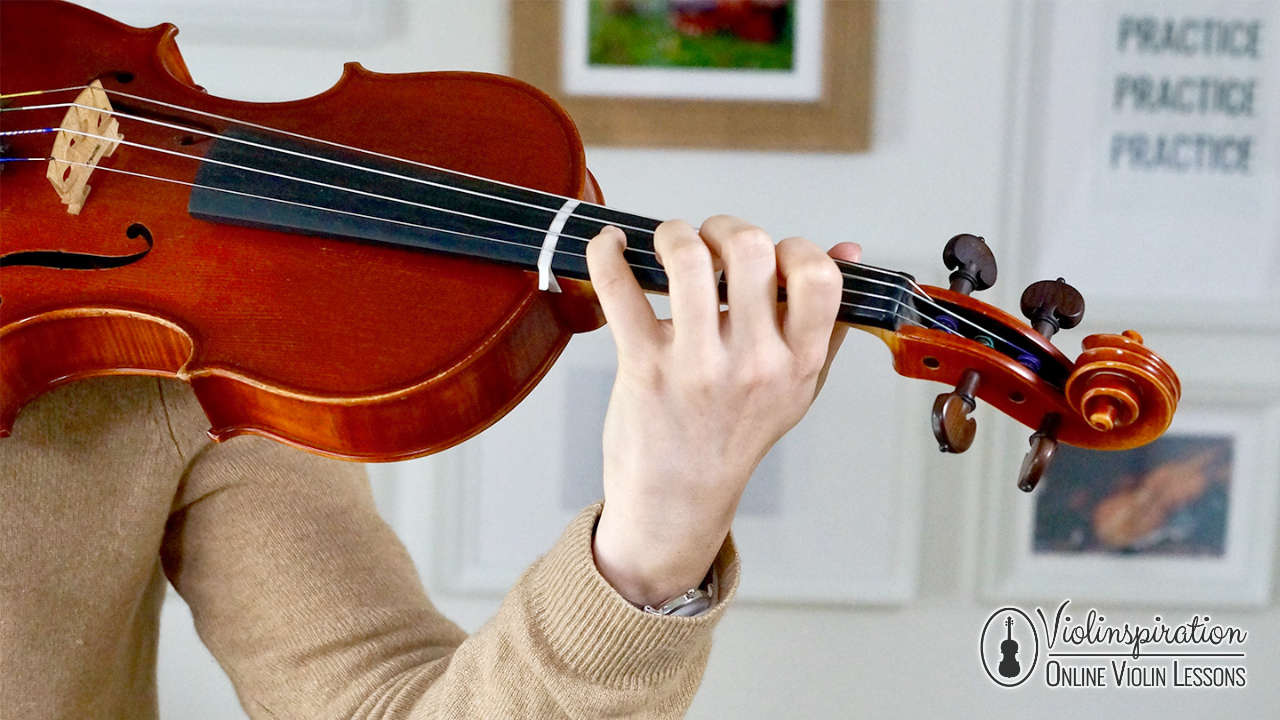
Trills
The next step is to trill between your fingers. Trills are created when you alternate between two notes quickly. They help build velocity and finger speed. First, play your first and second fingers on the A string. Start by going slowly and eventually speed up the alternations so it sounds like a flutter. You can trill with any fingers that are next to each other: 1st and 2nd, 2nd and 3rd, 3rd and 4th.
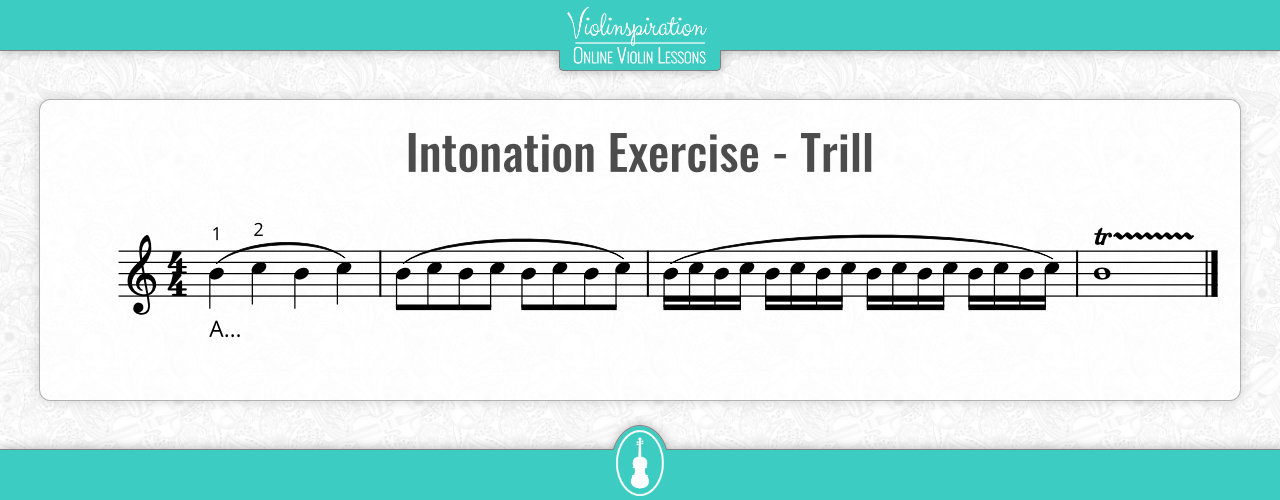
Exercises for All Fingers
As you advance past this stage, it is important to get all four fingers on one string in tune. Intonation is relative, so let’s work on the rest of the hand. Sevcik Op. 1, Part 1 is a great exercise book to start with. Each measure focuses on a four-note pattern, starting in the first position. Take each note separately with one long bow stroke for each note. If your note is too high, you are too sharp. Move your finger down a little to find the correct pitch. If it sounds too low, you are flat so move slightly up.
You can use a tuner to check if you are playing each note correctly. Feel free to use my free online tuner, a mobile app, or a tuner device.
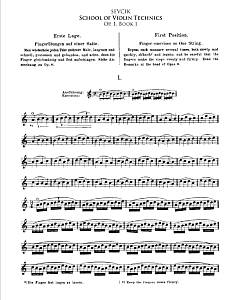
School of Violin Technics
Op. 1, Book 1 by Sevcik
These short Sevcik exercises cover all possible finger patterns. Play slowly one measure at a time and listen to make sure all fingers are going down evenly. You might need to adjust slightly, but now is the time to do it! You will want consistency in nailing the pitch over time, so you won’t have to adjust. This will strengthen your left-hand frame.
Another invaluable etude book for intonation is the Schradieck – School of Violin Technics. Playing these etudes daily helps in developing accuracy, strength, speed, and finger independence. As per the directions, students should keep the hand perfectly quiet, and let the fingers fall strongly and raise with swiftness. Play each line as many times and as slowly as you need until you can execute it easily. Try these exercises with a metronome set at a slow tempo, e.g. 60 bpm. As you become more comfortable, alter the speed and bowing.
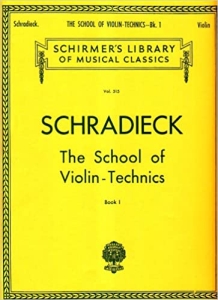
School of Violin Techniques
by Henry Schradieck
2. Scales, Scales, Scales
Scales are essentially the building blocks of violin intonation. They develop finger accuracy and ease as well as your ability to hear the intervallic relationships. They are also the foundation of all musical pieces, so it is imperative to work diligently and often slowly. Play them daily with a specific focus.
Scales for Beginner Students
Start with just a one-octave scale that begins on an open string (e.g. in the key of A Major). First, listen to the notes of this scale. In the video below, I play for you the A Major scale and three other easy scales:
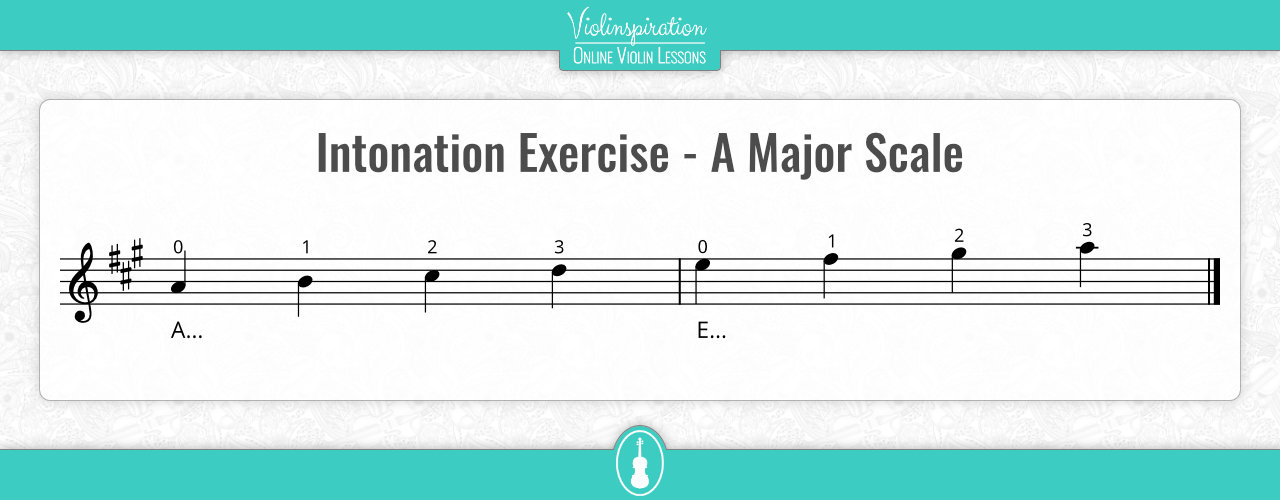
Next, try to sing it out loud before playing. This way you’ll hear the correct pitches in your head and can better match them on your violin. Then, start by playing only the perfect intervals, so in A Major scale that would be: A, D, E, and A.
If your strings are tuned correctly, each of these sounds should ring causing sympathetic vibrations.
Next, add the leading tone, which is the second-to-last note, and should be very close to the top note (high second finger). Finally, fill in the remaining notes and play each slowly with one per bow stroke. The very top note should match the first note you played because they form together an octave.
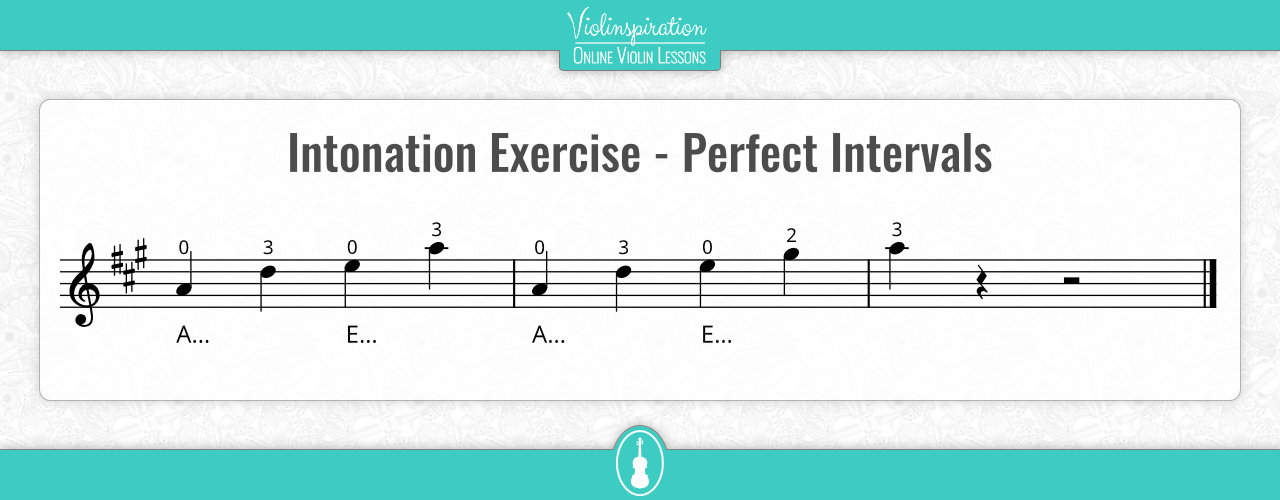
You can check what other scales I recommend for beginners and download them here:
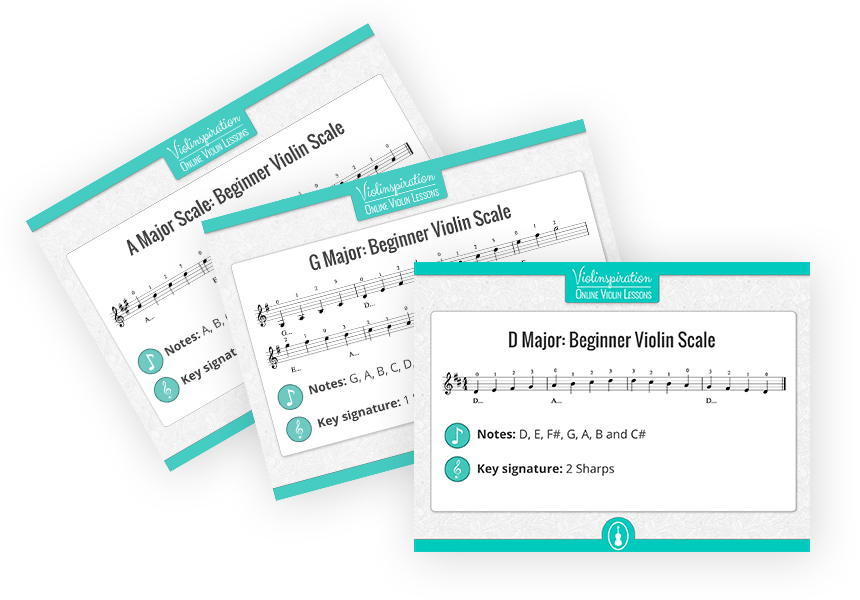
5 Most Common Violin Scales for Beginners
Scales for Intermediates
Once you have mastered the single-octave scale, begin adding a second octave. Using a metronome, start at 50 beats per minute with one note per bow stroke. As you add a second octave, it is important that both octaves match pitches so check with open strings and ring tones when possible. Your instrument will be naturally resonant on ring tones. Next, if you are adding any shifts, isolate them by practicing the shift on its own out of context. Prepare the finger when playing the preceding note and hover the finger over the string while you shift.
Barbara Barber’s Scales for Young Violinists and Schradieck Complete Scale Studies are great resources. They break down the scales into smaller, manageable practice units. Begin to play arpeggios as well and make sure your thirds are sharp enough in major keys.
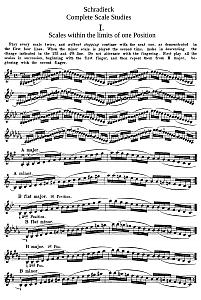
Complete Scale Studies by Schradieck
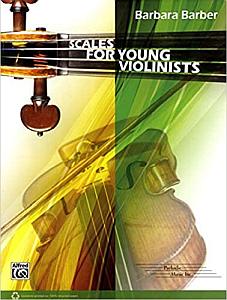
Scales for Young Violinists by Barbara Barber
Support us for more FREE content No extra costs for you Recommended by Violinists
Scales for Advanced Violinists
By this stage, you are likely playing three-octave scales. If you don’t have them yet, you can download the 5 most commonly used 3-octave scales here:
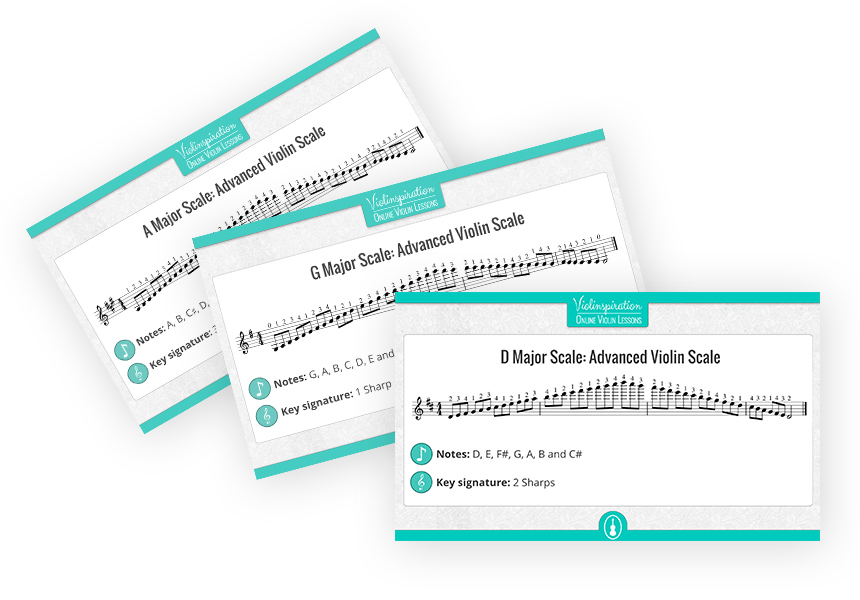
5 Most Common 3-Octave Scales
You want to build speed while still prioritizing accuracy, ease, and coordination. Start with one-string scales to warm up, like in the Flesch Scale System.
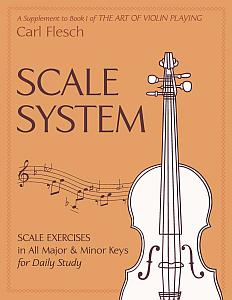
Scale System: Scale Exercises
in All Major and Minor Keys for Daily Study
Support us for more FREE content No extra costs for you Recommended by Violinists
The one-string scale on the E string might be the trickiest with all the shifts, so be patient and let your ear be your guide. Make sure all your leading tones are sharp enough. Continue through the Flesch Scale System for the full scale, harmonic, and melodic minor scales, arpeggios, and double stops. The double stops are especially important, as they encourage your ear to hear relative intonation. While a pitch may be in tune alone, it might need to be adjusted when paired with another. For more in-depth double stop tips, head to the post dedicated to them.
Another great resource is Galamian’s Contemporary Violin Technique book. His acceleration scale technique teaches the hand how to start slow and build speed. Starting the metronome at 50, practice slurring different amounts of notes—play 4 notes per bow stroke, then do 6, 8, 12, and finally 24. The beat should stay the same regardless of how many notes you are playing. Especially on the E string, there are many shifts so focus on quick, economical shifting.
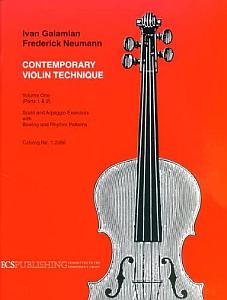
Contemporary Violin Technique by Galamian
Support us for more FREE content No extra costs for you Recommended by Violinists
As you practice diligently on solid hand technique building, add challenges like different bow strokes or rhythms. There are scales in nearly every piece of violin music, so mastering these will give you a lot of freedom.
3. Slow Practice With a Drone, Tuner, and Without Vibrato
One of the best ways to improve intonation is by utilizing slow practice. Regardless of how fast is the piece you are working on, playing each note alone can be helpful. You will learn to coordinate your left hand with the bow and be able to hear the pitches perfectly in tune. Maybe even just isolate a bar at a time until you feel secure in your hand. Always prioritize a beautiful tone.
Playing under tempo also increases your listening skills. In turn, you will recognize pitch differences and be able to adjust faster. The key to great intonation is hearing when you are playing out of tune and using your ear to quickly decide in which direction. One great way to train your ears is to practice with a drone. Download an app on your phone like TunerLite, use a web app, or use my tuner with the option to listen to the tuning notes. Playing along with a drone will give you a baseline to hear the relative notes. Utilize this app as a tuner as well to check your intonation.
If you are typically using vibrato, try practicing without it so you can hear the base of the note perfectly in tune. If you use a tuner, the vibrato will alter the feedback. Vibrato is meant to embellish, so getting a good baseline of intonation is important.
4. Sing to Hear the Notes First
One of the ways to develop accurate and finely tuned intonation is to hear the notes in your ear first. By having a clear idea of what notes you expect to hear, you will be surprised by how much your intonation will improve. For example, if you have to play the first finger on the A string but are not hearing the B in your head beforehand, your finger might just land near the pitch. You will likely have to adjust slightly in search of the correct sound. To really ensure you are hearing the correct pitch in your head, sing it out loud. You can check your singing pitch with a tuner. Students can sometimes be shy about singing but it’s not an audition! The point here is to learn the relative tuning abilities.
Additionally, one of the incredible things about violin is the ability to alter the pitches slightly to match the harmony. Unlike the piano, where the half steps are all equally spaced (called equal temperament), violins can make some pitches sound sharper or flatter to fit a specific harmony. J. S. Bach’s music is a great example of complex musical harmonies. Each note is related to the next and should be played accordingly. For Bach’s solo violin music, it can often be helpful to figure out what key you are in first. This way you are aware of which chords are more important than others. Knowing some basic music theory helps in tuning the pitches accordingly. For example, before arriving at a cadence, you will want to make some notes sound sharper to lead to the tonic.
5. Record Yourself – Be Your Own Teacher
Another tip I have often shared as a teacher is to record yourself. I know it can sound scary and you might be self-conscious, but you would be surprised at what things you miss when practicing. Even going slowly, many things might be missed. There can be so much feedback for your left hand, right hand, and posture. Maybe you aren’t sure why a shift isn’t as clean as you want it or your first finger is always flat in the third position. Use your cell phone to record yourself and be your own teacher. You might even mute the sound so you just play yourself the video to notice any clunkiness, for example. With time you’ll get used to this, so it won’t be as much stressful as it might be at the beginning.
Once you recorded yourself, you can submit the video and get feedback from a professional violin teacher. I offer it to all students at Julia’s Violin Academy. In the feedback reply, you will get information about what is done well and what needs improvement. If you are not a member of Julia’s Violin Academy yet, request your invitation now!
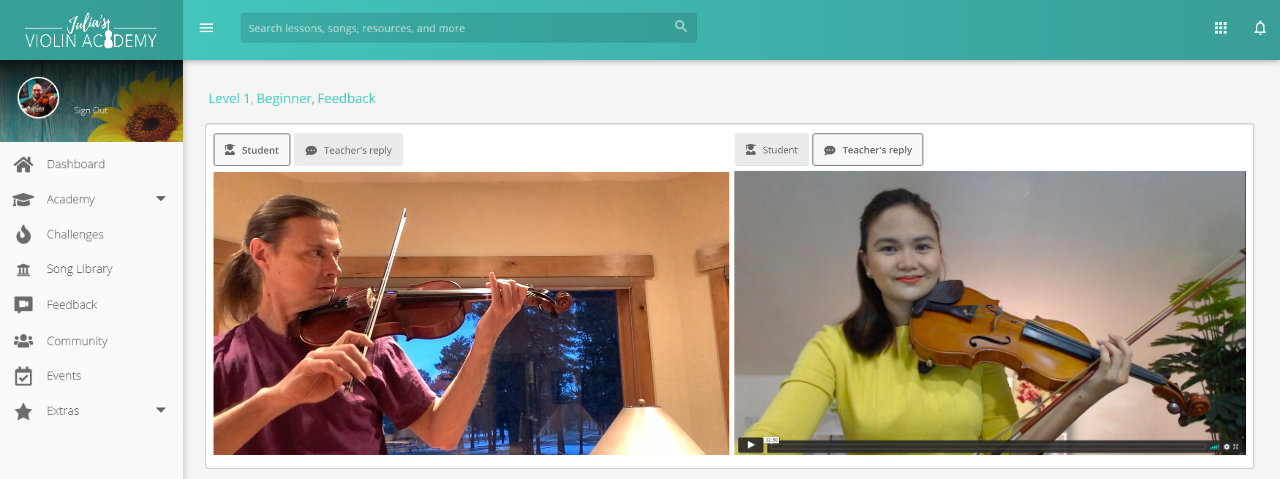
Final Note
The violin can be a tricky instrument because of how many things we need to keep track of—beautiful tone, left-hand ease, musical phrasing, rhythm, and timing—but with these violin intonation exercises, I hope playing in tune will at least be a little easier. Of course, like with anything else, (slow) practice and patience will help. Intonation is a constant work in progress but the goal is to play in tune more often until it becomes more natural.
























